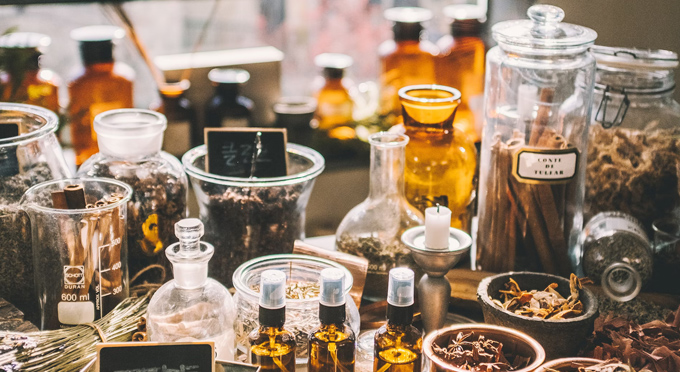
In a world that often leans toward pharmaceutical solutions, having a well-stocked natural medicine cabinet can be a game-changer for maintaining your health and wellness. Natural remedies can offer gentle and effective alternatives for common ailments and minor health issues. Here are the top five items that you should have in your natural medicine cabinet for a holistic approach to well-being.

1. Arnica Montana (Arnica)
Arnica is a perennial herb known for its remarkable healing properties. It’s commonly used in homeopathic preparations and topical creams. Arnica can be a powerful ally for soothing muscle aches, bruising, and sprains. It’s a go-to remedy for athletes, hikers, and anyone prone to bumps and bruises.
Arnica (arnica Montana), is a perennial plant with yellow-orange flowers, that has been used medicinally for centuries by Europeans. Although it is commonly known as the number one remedy for sprains, bruises, muscle aches, and wounds, Arnica also provides quick relief from pain, shock and trauma. You can find Arnica in a topical ointment, salve or spray as well as in pill form to be taken internally as a homeopathic remedy.
Plant Characteristics
- Arnica is a perennial herb that belongs to the Asteraceae family, which includes sunflowers and daisies.
- It has bright yellow-orange flowers with a daisy-like appearance.
- Arnica typically grows in mountainous regions of Europe and North America.
Medicinal Uses
- Pain Relief: Arnica is well-known for its analgesic (pain-relieving) properties. It’s often used topically to relieve muscle aches, joint pain, and soreness.
- Anti-Inflammatory: Arnica has anti-inflammatory properties, making it effective in reducing swelling and inflammation associated with injuries and bruises.
- Bruise and Trauma Relief: Arnica is commonly used to speed up the healing process of bruises, contusions, and minor injuries.
- Arthritis: Some people use arnica for symptomatic relief from osteoarthritis and other forms of joint pain.
- Skin Conditions: Arnica creams or ointments are used for various skin conditions, such as acne, eczema, and insect bites.
How to Use Arnica
- Topical Application: Arnica is typically applied topically in the form of creams, gels, ointments, or oils. It should be applied directly to the affected area.
- Homeopathic Remedies: Arnica is also available in homeopathic preparations, such as pellets or tinctures, which are taken orally.
Precautions
- Arnica should not be ingested orally in its pure form, as it can be toxic when taken internally.
- Do not apply arnica to broken skin, open wounds, or mucous membranes.
- Allergic reactions to arnica are rare but can occur. Always perform a patch test before applying it to a larger area of skin.
- It’s important to follow the recommended dosage and application instructions provided with arnica products.
Homeopathic Arnica vs. Herbal Arnica
- Homeopathic arnica is highly diluted and prepared through a specific process, making it safe for oral consumption. It’s used in very small doses.
- Herbal arnica is used topically and should not be ingested due to its potential toxicity.
Arnica Species
- There are several species of arnica, with Arnica montana being the most commonly used for medicinal purposes.
Arnica’s natural healing properties have made it a popular choice for individuals seeking natural remedies for pain, inflammation, and minor injuries. While it is generally considered safe for topical use when used as directed, it’s essential to exercise caution and consult a healthcare professional if you have any concerns or questions regarding its use, especially if you are pregnant, nursing, or have underlying health conditions.
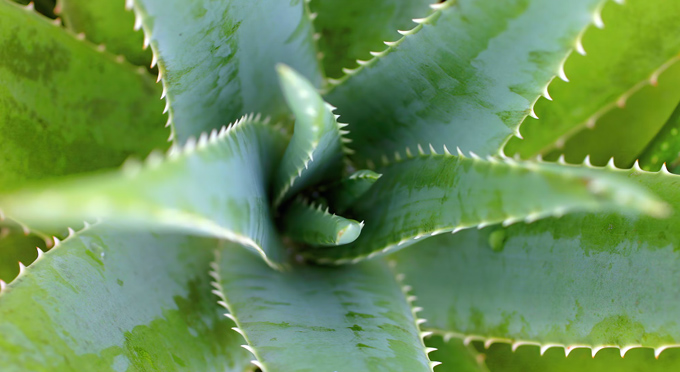
2. Aloe Vera Gel
Aloe vera is a succulent plant with a gel-like substance in its leaves that has been cherished for its skin-soothing properties for centuries. It’s a versatile natural remedy for alleviating sunburn, minor burns, skin irritations, and even acne.
The healing power of Aloe Vera dates back thousands of years. Thanks to its cool, soothing, anti-inflammatory effect on the skin, it’s widely used in the healing of wounds, frostbite and burns. The natural, plant derived ointment penetrates skin easily and it gets absorbed quickly. It’s also a natural moisturizer and skin conditioner containing valuable vitamins and nutrients. When Aloe soaks into your skin it carries nutrients deep down in order to heal and condition your skin from the inside out.
Appearance and Growth
- Aloe vera is a low-maintenance, drought-resistant plant that thrives in warm, arid climates.
- It has thick, fleshy leaves that are green or bluish-green in color and can grow up to 18-24 inches in length.
- The leaves are filled with a gel-like substance, which is the part of the plant used for its various applications.
Medicinal and Cosmetic Uses
- Skin Soothing: Aloe vera gel is renowned for its ability to soothe and hydrate the skin. It’s often used to alleviate sunburn, minor burns, insect bites, rashes, and skin irritations.
- Wound Healing: Aloe vera’s natural compounds promote wound healing by stimulating cell growth and reducing inflammation.
- Digestive Health: Aloe vera juice or supplements are sometimes used to support digestive health and relieve symptoms of conditions like acid reflux and irritable bowel syndrome (IBS).
- Hydration: Aloe vera gel can be used as a natural moisturizer, keeping the skin hydrated without clogging pores.
- Anti-Inflammatory: The plant’s anti-inflammatory properties make it useful for reducing inflammation associated with conditions like arthritis.
- Oral Health: Aloe vera gel can be found in some natural toothpaste and mouthwash products, promoting healthy gums and reducing oral inflammation.
How to Use Aloe Vera
- Topical Application: For skincare, cut a leaf, slice it open, and apply the fresh gel directly to the affected area. You can also use store-bought aloe vera gel for convenience.
- Aloe Vera Products: Aloe vera is a common ingredient in various skincare and cosmetic products, including lotions, creams, sunscreens, and shampoos.
- Oral Consumption: Aloe vera juice or supplements can be consumed for potential digestive benefits. It’s available in health food stores.
Precautions
- Aloe vera is generally safe for topical use but can cause skin irritation in some individuals. It’s advisable to do a patch test before applying it to larger areas.
- When using aloe vera supplements or juice orally, consult with a healthcare provider, as excessive consumption may lead to digestive discomfort.
Plant Care
- If you want to grow your own aloe vera plant, ensure it receives bright but indirect sunlight and well-drained soil.
- Water the plant sparingly, allowing the soil to dry out between watering.
Aloe vera’s versatility and natural healing properties make it a popular choice for a range of skincare, wound care, and digestive health needs. Whether applied topically or consumed orally, aloe vera continues to be a trusted remedy for promoting well-being inside and out.
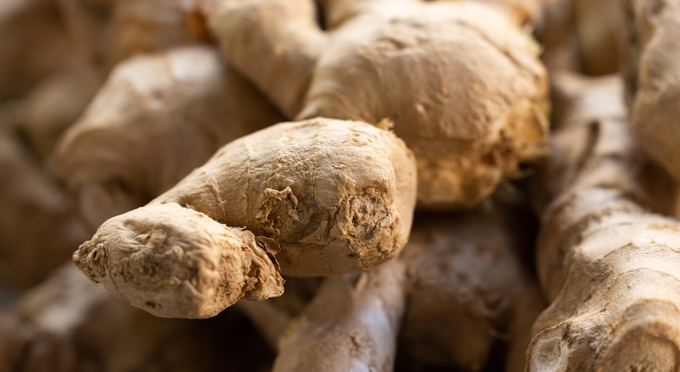
3. Ginger
Ginger is not just a spice; it’s a potent natural remedy for various digestive issues. It can help relieve nausea, indigestion, and motion sickness. Additionally, ginger has anti-inflammatory properties that can be beneficial for soothing sore throats and reducing muscle pain.
Ginger (Zingiber officinale) is a versatile and widely used medicinal herb known for its distinctive flavor and a wide range of health benefits. Ginger is renowned for its digestive benefits. It can help alleviate nausea, indigestion, and motion sickness, and it’s often used by pregnant women to reduce morning sickness. Ginger also contains bioactive compounds called gingerols, which have potent anti-inflammatory and antioxidant effects. When shopping for medicinal products, you’ll find that ginger is available in various supplement forms, including capsules, extracts, and tinctures, often for its medicinal benefits.
Possible Health Benefits
- Digestive Aid: Ginger is renowned for its digestive benefits. It can help alleviate nausea, indigestion, and motion sickness. It’s often used by pregnant women to reduce morning sickness.
- Anti-Inflammatory: Ginger contains bioactive compounds called gingerols, which have potent anti-inflammatory and antioxidant effects. These properties may help reduce pain and inflammation in conditions like osteoarthritis.
- Immune Support: Ginger has immune-boosting properties and may help the body fight infections.
- Pain Relief: Some studies suggest that ginger may help reduce menstrual pain and muscle soreness.
- Anti-Nausea: It’s effective in reducing nausea, including nausea related to chemotherapy and surgery recovery.
- Heart Health: Ginger may contribute to heart health by lowering blood pressure and improving cholesterol levels.
How to Use Ginger
- Ginger Tea: Steep fresh ginger slices in hot water for a soothing tea.
- Ginger Chews or Candies: Convenient for on-the-go nausea relief.
Precautions
- While ginger is generally considered safe for most people, consuming excessive amounts may cause digestive discomfort.
- People taking blood-thinning medications or with bleeding disorders should consult their healthcare provider before consuming ginger supplements, as it may have blood-thinning effects.
Ginger is a remarkable herb with a long history of culinary and medicinal use. Its wide-ranging health benefits make it a valuable addition to a balanced diet and a natural remedy for various health concerns. Whether used in cooking or as a remedy, ginger offers both flavor and wellness support.
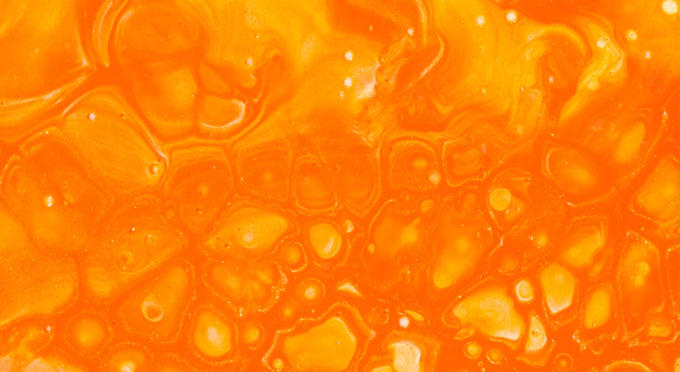
4. Honey
Honey is not only a sweet treat but also a powerful natural healer. Raw, unprocessed honey has antibacterial and anti-inflammatory properties, making it a valuable addition to your medicine cabinet. It can help soothe sore throats, alleviate coughs, and promote wound healing.
Honey is a natural sweet substance produced by honeybees from the nectar of flowers. It has been used for thousands of years as a food, sweetener, and traditional remedy due to its unique taste and a wide range of potential health benefits. Here’s more information about honey:
Types of Honey
- There are many varieties of honey, each with its distinct flavor and color. These variations depend on the types of flowers the bees visit to collect nectar.
- Common types of honey include clover honey, wildflower honey, acacia honey, and manuka honey (known for its medicinal properties).
Production Process
- Honeybees collect nectar from flowers using their long, tube-like tongues. They store this nectar in their honey stomachs.
- Enzymes in the bee’s stomach break down the nectar’s complex sugars into simpler sugars, such as glucose and fructose.
- Bees regurgitate the processed nectar into the hive’s honeycomb cells.
- The bees then fan their wings over the nectar to reduce its water content and thicken it into honey.
- Once the honey is sufficiently thickened and has a moisture content of around 17-18%, the bees seal the cells with wax.
Nutritional Composition
- Honey is primarily composed of sugars, with roughly 80% natural sugars, including fructose and glucose.
- It contains small amounts of vitamins and minerals such as vitamin C, calcium, potassium, and iron.
- Honey also contains antioxidants, which can help protect cells from damage.
- Raw, unfiltered honey may contain trace amounts of pollen, which can vary depending on the floral source.
Health Benefits
- Antibacterial Properties: Honey has natural antibacterial properties due to its low water content, high acidity, and the release of hydrogen peroxide when it comes into contact with wounds. It has been used historically to treat wounds and prevent infections.
- Sore Throat and Cough Relief: Honey is a well-known home remedy for soothing sore throats and suppressing coughs. It can help reduce irritation and inflammation in the throat.
- Skin Health: Applied topically, honey can moisturize the skin, reduce inflammation, and promote wound healing.
- Antioxidant Benefits: The antioxidants in honey may help protect cells from oxidative stress and support overall health.
- Digestive Health: Some people use honey to alleviate digestive discomfort, such as indigestion or constipation.
How to Use Honey
- Sore Throat Remedy: Mix a spoonful of honey with warm water and a squeeze of lemon.
- Cough Suppressant: Take a teaspoon of honey to relieve coughing.
Types of Honey Products
- Raw Honey: This type of honey is unprocessed, unfiltered, and not heated. It retains more of its natural enzymes and antioxidants.
- Processed Honey: Most honey available in stores is pasteurized and filtered to remove impurities and extend shelf life.
- Manuka Honey: Manuka honey, produced from the nectar of the Manuka tree in New Zealand, is known for its unique antibacterial properties and is often used for medicinal purposes.
Precautions
- While honey is generally safe for adults, it should not be given to infants under one year of age due to the risk of botulism.
- People with allergies to bee products should exercise caution when consuming honey.
- Diabetics should be mindful of honey’s sugar content and its potential impact on blood sugar levels.
Honey’s versatility, sweet flavor, and potential health benefits make it a valuable natural ingredient in cooking, baking, and home remedies. Whether enjoyed on toast, used as a natural sweetener, or applied topically for skin and wound care, honey has earned its place as a cherished and ancient natural food product.
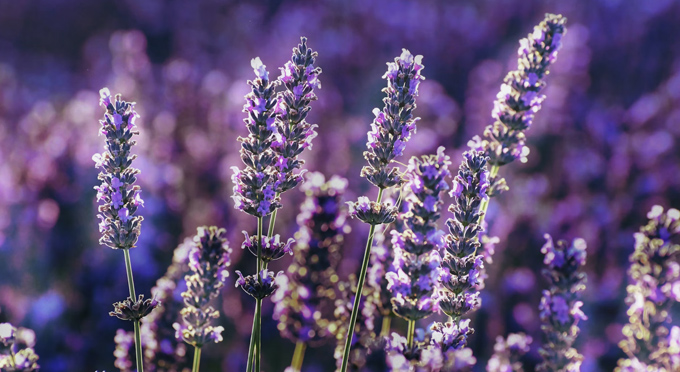
5. Lavender Essential Oil
Lavender essential oil is a versatile and calming remedy with a myriad of uses. It’s renowned for its ability to promote relaxation, reduce anxiety, and improve sleep quality. Additionally, lavender oil can help soothe minor burns, insect bites, and headaches.
Lavender essential oil is one of the most popular and versatile essential oils in aromatherapy and natural wellness. It is extracted from the lavender plant’s flowers, specifically from Lavandula angustifolia, and is prized for its calming, soothing, and therapeutic properties. Here’s more information about lavender essential oil:
Aromatherapy and Fragrance
- Lavender essential oil is renowned for its pleasant and relaxing fragrance. It has a sweet, floral scent with herbaceous undertones.
- Its aroma is known to promote relaxation, reduce stress, and improve sleep quality. Diffusing lavender oil is a common practice for these purposes.
Health and Wellness Benefits
- Relaxation and Stress Reduction: Inhaling lavender oil vapor or using it in aromatherapy may help reduce stress, anxiety, and promote a sense of calm.
- Improved Sleep: Lavender essential oil is often used to improve sleep quality. Adding a few drops to a diffuser or using a lavender-scented pillow can promote restful sleep.
- Pain Relief: Topical application of diluted lavender oil may help alleviate headaches, muscle aches, and minor pain.
- Skin Care: Lavender oil has anti-inflammatory and antibacterial properties, making it useful for soothing minor skin irritations, acne, and promoting wound healing.
- Respiratory Benefits: Inhaling lavender vapor may ease respiratory conditions like colds, allergies, and asthma.
- Hair Care: Lavender oil can be added to shampoos and conditioners for its potential benefits in promoting healthy hair and scalp.
How to Use Lavender Essential Oil
- Aromatherapy: Add a few drops to a diffuser or place a drop on your pillow for better sleep.
- Topical Application: Dilute a few drops with a carrier oil and apply to the skin for soothing relief.
Precautions
- While lavender oil is generally safe for most people, it’s essential to perform a patch test before using it on larger areas of the skin, as some individuals may have sensitivities.
- Do not ingest lavender essential oil unless under the guidance of a qualified aromatherapist or healthcare professional.
- Pregnant and breastfeeding women, as well as individuals with certain medical conditions or allergies, should consult with a healthcare provider before using essential oils.
Lavender Varieties
- There are several lavender species and varieties, each with slightly different aromatic profiles. Lavandula angustifolia (true lavender) is the most commonly used for therapeutic purposes.
- Lavandula x intermedia (lavandin) is another variety used in essential oil production.
Other Uses
- Lavender essential oil is used in a wide range of products, including perfumes, candles, soaps, and skincare items.
- It can be added to bathwater for a relaxing soak.
- Lavender sachets or dried lavender flowers are used to scent drawers and closets.
Lavender essential oil’s gentle yet potent properties make it a valuable addition to any aromatherapy collection. It’s appreciated not only for its delightful scent but also for its potential benefits in promoting relaxation, sleep, and overall well-being. Always use essential oils with care, following recommended dilution guidelines, and consult with a healthcare professional if you have specific health concerns or questions about their use.
Having these five essential items in your natural medicine cabinet empowers you to address a wide range of common health concerns naturally. While these remedies are generally safe and effective for minor ailments, it’s essential to consult with a healthcare professional for severe or persistent health issues. Integrating these natural remedies into your wellness routine promotes a holistic approach to health and well-being, putting the power of nature at your fingertips.
Got your own favorite remedy? Have an item that you couldn’t live without? If you have any herbs, herbal remedies, or other natural medicines that you don’t see listed here, use the comments section to share.
These may be the top 5 products that you should have in your natural medicine cabinet, but you may think that another one edges one of these items out. If you have another option that you think deserves a top5 five spot, let us know.




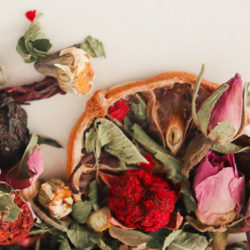
 Ordering Info
Ordering Info Customer Service
Customer Service Follow Us
Follow Us Search For Stuff
Search For Stuff Find Us
Find Us Call Us
Call Us Pay Us
Pay Us

0 Comments so far.
Use the form below to add your own thoughts or questions. Scroll down to read what other people had to say.